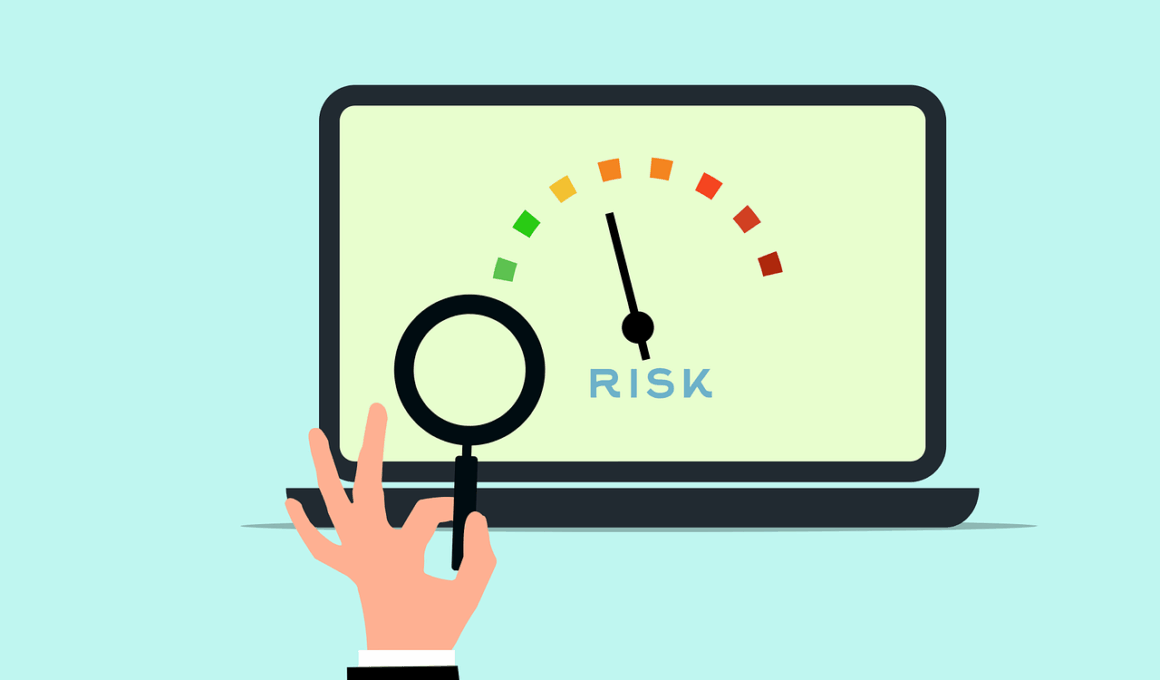Risk Management Strategies in Private Equity Investments
In the realm of private equity investments, effective risk management strategies are paramount. The private equity landscape is inherently volatile, characterized by its significant potential for both substantial returns and considerable losses. Investors must identify, assess, and manage various risks that come with investing in this space. Some common risks include market risk, liquidity risk, operational risk, and regulatory compliance risks. Understanding these different risk categories is crucial for forming an effective investment strategy. Moreover, implementing proper due diligence and thorough market analysis can help mitigate potential downsides. It is essential for private equity firms to engage in comprehensive financial modeling and stress testing, which aids in forecasting various economic scenarios and their impacts on portfolio performance. Investors often prioritize diversification across sectors and geographies to minimize concentration risk. By embracing a proactive approach that blends both quantitative and qualitative assessments, private equity stakeholders can navigate market uncertainties while aligning their investment objectives with risk tolerance levels. Ultimately, fostering a culture of risk awareness and embracing best practices in risk management can pave the way for sustainable investment opportunities within the private equity landscape.
Assessing Investment Risks
Assessing investment risks is a critical component of successful private equity investing. Firms often utilize comprehensive frameworks for evaluating potential investments, encompassing financial, operational, and market-related dimensions. One effective method involves the use of SWOT analysis—identifying strengths, weaknesses, opportunities, and threats associated with a prospective investment. Additionally, thorough market research can pinpoint trends and competitive dynamics that affect investment viability. Understanding the target company’s financial health plays an integral role in risk assessment. Families and teams trained in financial modeling can project revenues and identify red flags in cash flow management. Furthermore, analyzing historical performance data can provide insights into the company’s past resilience during economic downturns. Investors must also consider external factors, such as shifts in regulatory landscapes and technological advancements, which can significantly alter market conditions. Continuous monitoring and reassessment of these risks ensure investors remain informed and poised to adapt to changing scenarios. Ultimately, having a deep understanding of investment risks empowers private equity firms to make informed decisions, increasing the likelihood of achieving desired returns while minimizing exposure to unforeseen pitfalls.
Liquidity risk is a prominent challenge in private equity investments, primarily due to the illiquid nature of these assets. Unlike publicly traded stocks, private equity investments typically require a longer holding period, often spanning several years. This lack of liquidity can pose significant risks, especially in turbulent economic conditions when exits become scarce. To mitigate liquidity risk, investors should establish a clear exit strategy prior to making an investment. Identifying multiple exit routes, such as strategic sales, public offerings, or secondary markets, can increase flexibility when seeking returns. Diversifying the investment portfolio across different asset classes beyond traditional private equity can also alleviate liquidity pressures. Regularly assessing the liquidity profile of each investment will enable firms to make timely decisions regarding selling interests or rebalancing portfolios. Additionally, maintaining strong relationships with potential buyers can facilitate smoother exit processes, thereby alleviating concerns about liquidity. A disciplined investment approach, paired with continuous monitoring of market conditions, ensures investors are equipped to manage liquidity risk effectively. Adopting these proactive measures empowers private equity firms to sustain their investment strategies, even amid uncertainties in the market landscape.
Diversification as a Risk Management Tool
Diversification is one of the most effective strategies to manage risk within private equity investments. By spreading investments across various industries and geographic markets, private equity firms can reduce their exposure to any single economic downturn. A diversified portfolio acts as a buffer against fluctuations in performance, stabilizing overall returns. However, diversification should not only focus on quantitative measures; qualitative aspects matter as well. Investors must thoroughly evaluate the business models, competitive advantages, and market positions of the companies within their portfolio. Over-diversification, however, can dilute potential returns and complicate management efforts. Balancing the breadth of diversification with the depth of expertise on specific investments is essential. Conducting thorough market research before entering new segments helps safeguard against unforeseen risks. Additionally, sector-specific funds can create concentrated investments in various niches, fostering diversification while leveraging specialized knowledge. As part of a robust risk management framework, diversification encompasses assessing correlations between assets. Adapting diversification strategies to align with market cycles and economic conditions will maximize the potential for long-term value creation in the private equity sector.
Operational risk presents another layer of complexity in private equity investments, often arising from internal processes, people, systems, and external events. Effective risk management within this area requires a comprehensive understanding of operational practices and potential vulnerabilities in portfolio companies. Routine evaluations of operational processes can identify areas requiring improvement to mitigate risks. Implementing robust reporting systems ensures that stakeholders are alerted to discrepancies promptly, enabling timely interventions. Collaboration and communication within management teams and across the investment landscape also significantly impact operational risk management. Firms should emphasize strong governance structures and policies to enhance accountability. Furthermore, conducting regular audits helps uncover potential weaknesses in internal controls. Building a culture of transparent communication promotes risk awareness among employees, fostering a proactive approach to identifying and addressing challenges. Additionally, investment in technology and data analytics may further enhance the oversight of operations, establishing data-driven insights into risk exposures. Ultimately, lowering operational risk enhances overall portfolio performance, providing investors with the confidence to navigate an increasingly complex investment climate.
Regulatory Compliance in Private Equity
Regulatory compliance risk is an inherent concern in the private equity industry. With constant changes in laws and regulations, private equity firms must remain vigilant to avoid severe penalties and reputational damage. Effective risk management requires implementing robust compliance frameworks that ensure adherence to legal and regulatory standards. Developing comprehensive compliance policies and regular employee training sessions play a vital role in staying aligned with ever-evolving regulations. Additionally, employing legal and compliance experts helps firms navigate the complex regulatory landscape effectively. Staying informed about updates in tax laws, anti-money laundering regulations, and corporate governance requirements is essential. Firms should conduct periodic compliance audits to assess existing policies and identify potential vulnerabilities. Moreover, fostering a culture of compliance within the organization enhances accountability and encourages proactive risk management. Engaging in transparency with investors about regulatory compliance efforts can build trust and strengthen relationships. In a climate where scrutiny is ever-present, demonstrating commitment to compliance is paramount. By prioritizing regulatory adherence, private equity firms can safeguard their investments and ensure sustainable growth.
Lastly, the integration of technology plays a crucial role in enhancing risk management strategies in private equity investments. Advanced data analytics and machine learning capabilities facilitate a real-time assessment of market conditions and potential risks. Implementing technology-driven solutions enables firms to process large volumes of data, allowing for more informed decision-making. These tools significantly improve the accuracy of risk modeling and forecasting, ultimately enhancing the firm’s response to emerging threats. Utilizing technology for automating compliance tasks streamlines operations and reduces the likelihood of human errors. Furthermore, incorporating tools that monitor industry trends and competitor performances equips firms with valuable insights, aiding in the identification of opportunities and risks alike. Firms need to invest in technology that aligns with their strategic objectives while remaining agile to adapt to market changes. Additionally, collaboration with fintech platforms can offer innovative solutions tailored for private equity risks. By leveraging cutting-edge technologies, firms can strengthen their risk management protocols, enhance operational efficiency, and maximize long-term value for investors. Embracing technological advancements in the risk management domain empowers private equity firms to navigate an increasingly dynamic investment environment.


